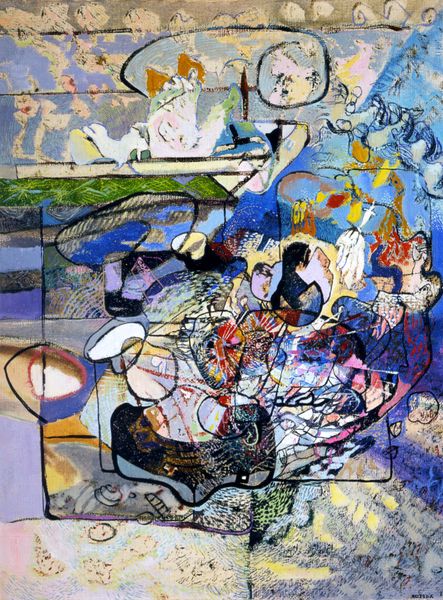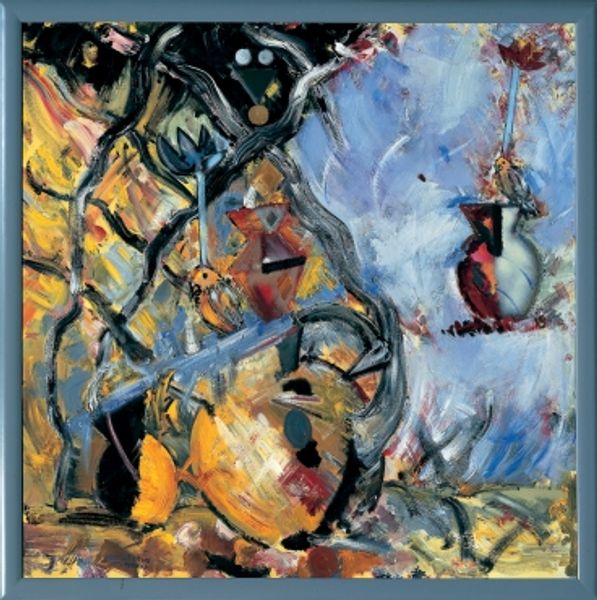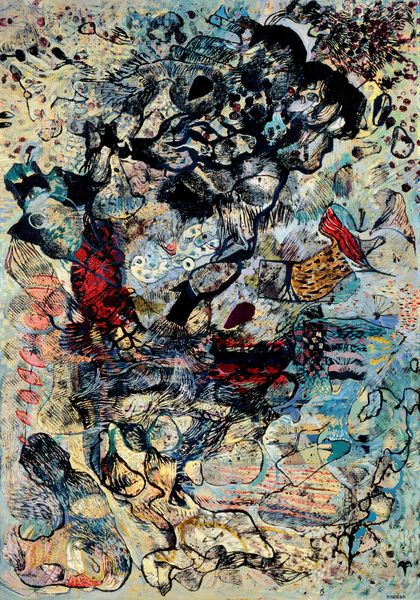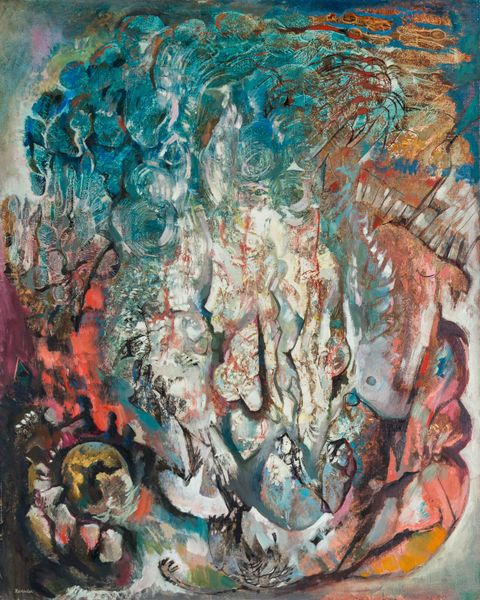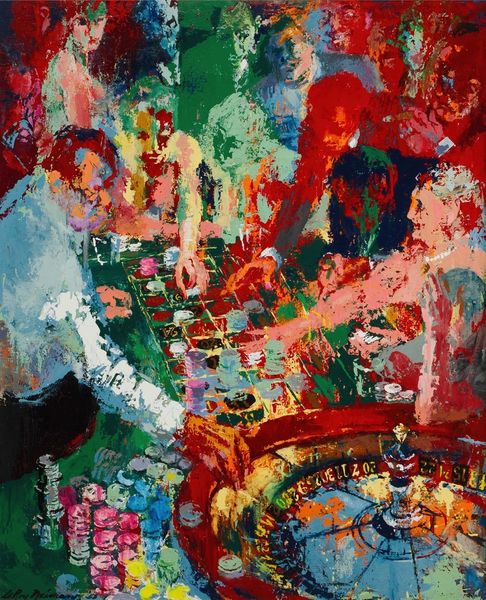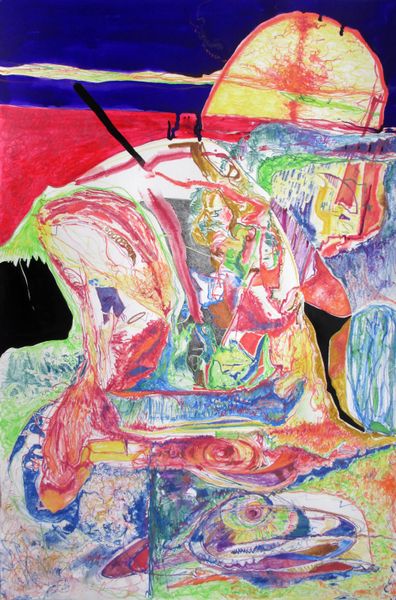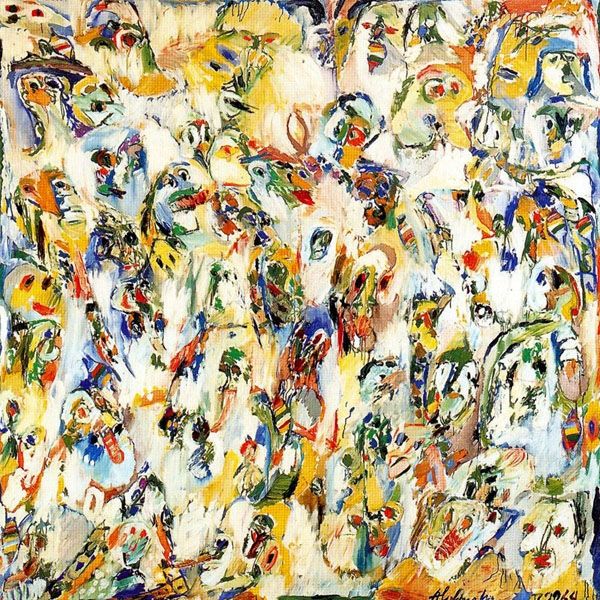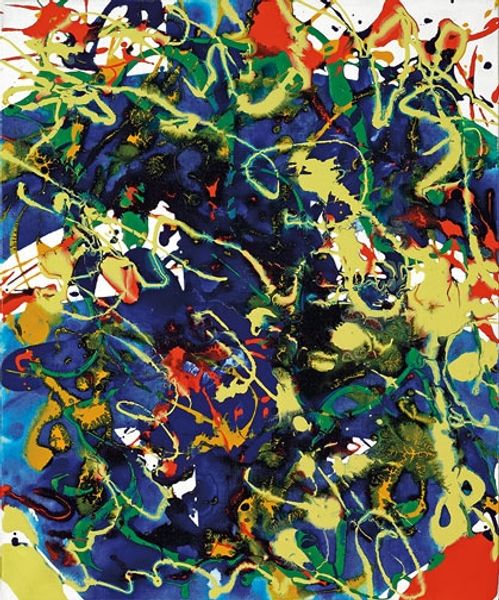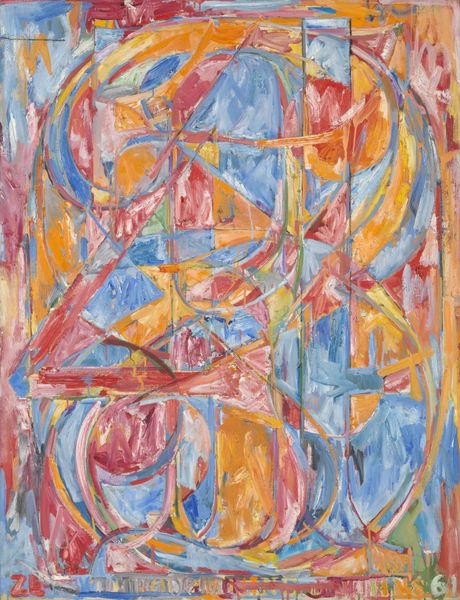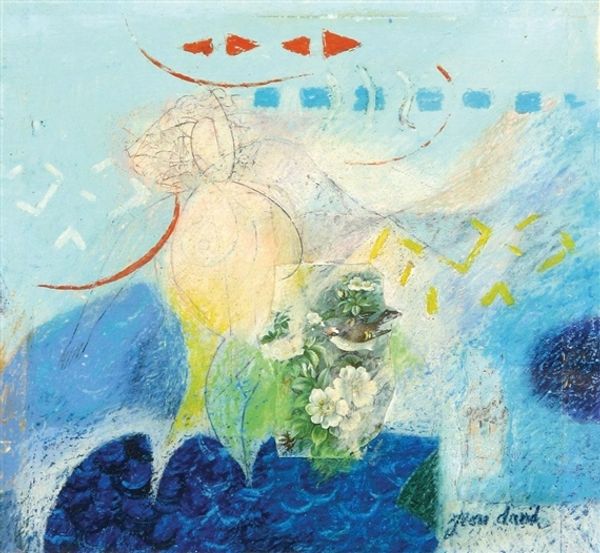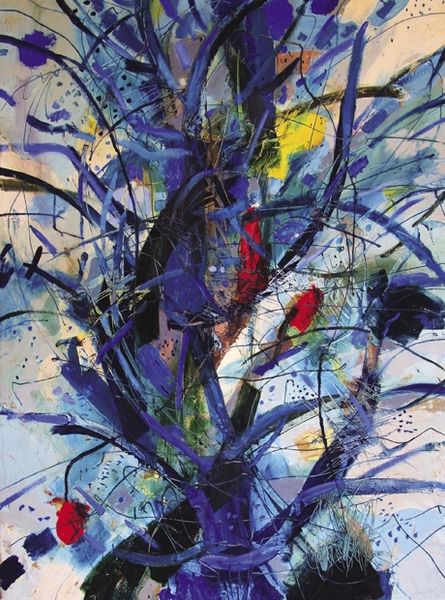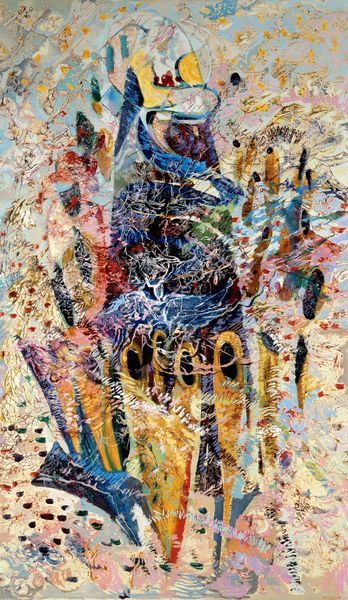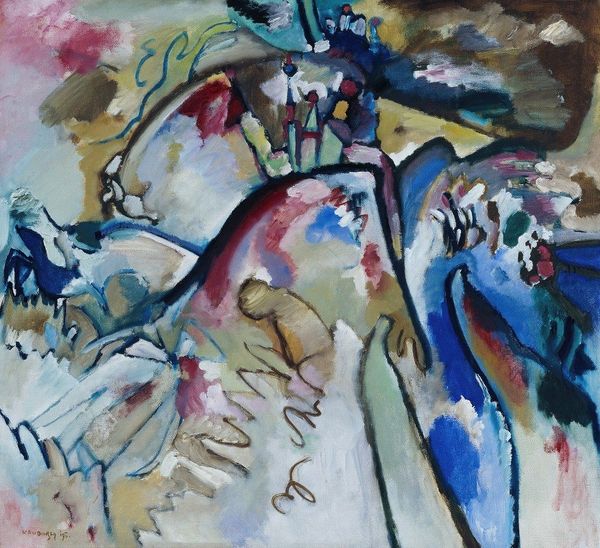
Dimensions: 79 x 76 cm
Copyright: Endre Rozsda,Fair Use
Curator: This piece is titled "Promenade d'Élisabeth," painted in 1946 by Endre Rozsda. It’s done in acrylic paint, exhibiting Rozsda's signature blend of expressionism and abstract forms. Editor: Wow. My first thought is utter chaos, but in the most glorious, painterly way. It's like an explosion of confetti caught mid-air. Does anyone else feel dizzyingly cheerful looking at this? Curator: The post-impressionist influence is strong here, particularly in Rozsda's use of color. You can see fauvist tendencies in his heightened, almost unnaturalistic palette. Editor: Absolutely, that electric blue against the golds and ochres…it's daring! It feels so intuitive, like watching someone spontaneously invent a garden on the canvas. Is it even a garden? Or just a feeling of lushness? Curator: Rozsda's work is heavily influenced by the social and political context of post-war Europe. The apparent chaos could be seen as a reflection of the turmoil and uncertainty of that period. Editor: Hmm, I see what you mean, but to me, there’s also a huge sense of liberation. A kind of "we survived, now let's create something utterly bonkers and beautiful" attitude. The fluid art hints feel very current too, strangely so for something created so long ago! Curator: And considering the period, this would not be something readily accepted, one imagines, so Rozsda was certainly pushing boundaries in his creation. Editor: And look how Rozsda has broken it up again with that lattice effect on the bottom left of the work: what appears a little uncontrolled then gets a geometric order in what almost feels a fight to be free. Very powerful! I love that feeling when something so vibrant contains shadows of deep and complicated thought, but delivered like an invitation to be creative. Curator: I agree completely. Rozsda understood the public role of art, and how it could respond to, and challenge, prevailing societal norms. "Promenade d'Élisabeth" serves as a great example of the artist engaging with complex themes in a seemingly whimsical and colourful manner. Editor: Definitely food for thought, I am going to need to spend some more time drinking this visual feast. Thank you. Curator: It has been a pleasure.
Comments
No comments
Be the first to comment and join the conversation on the ultimate creative platform.
